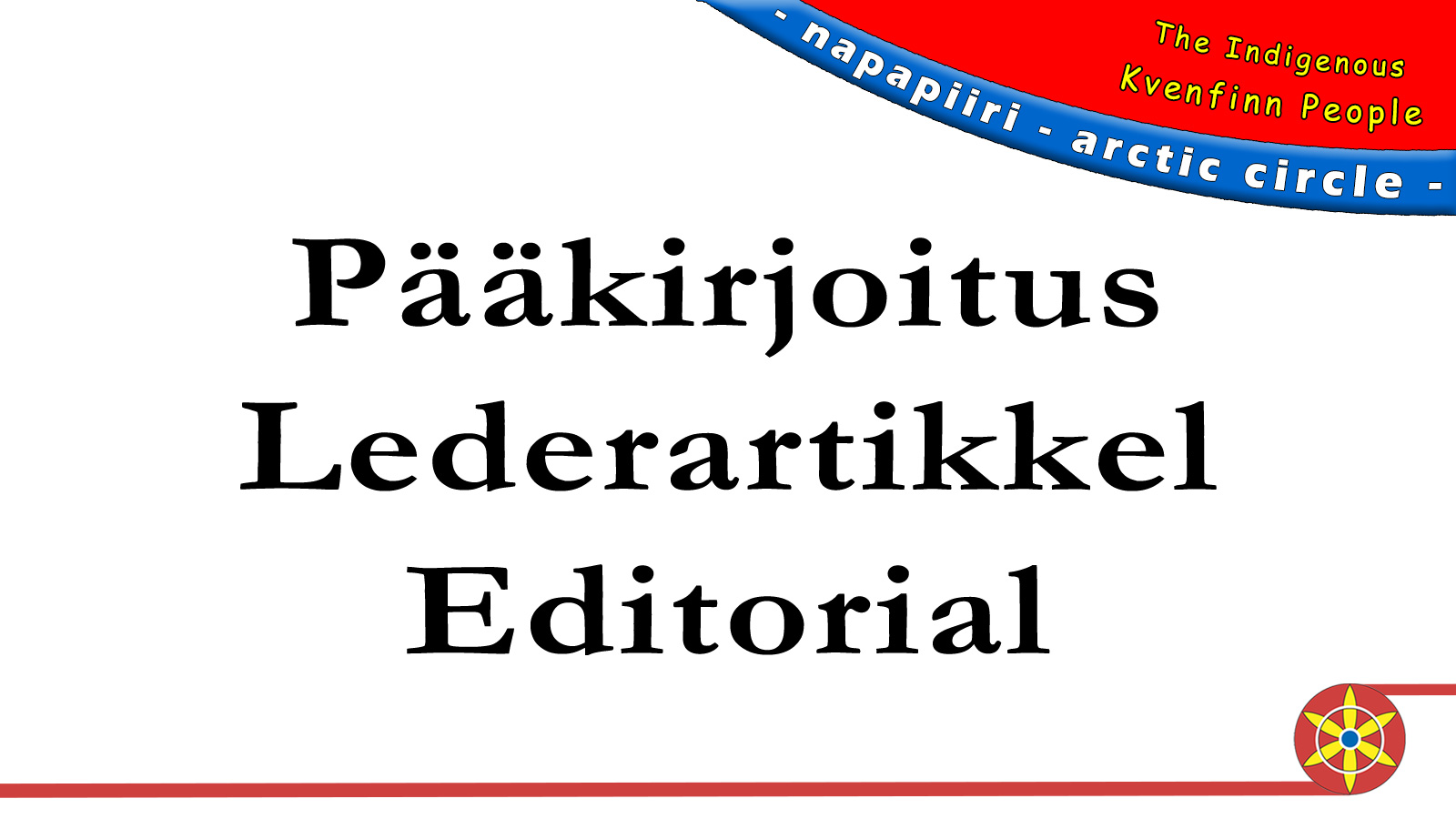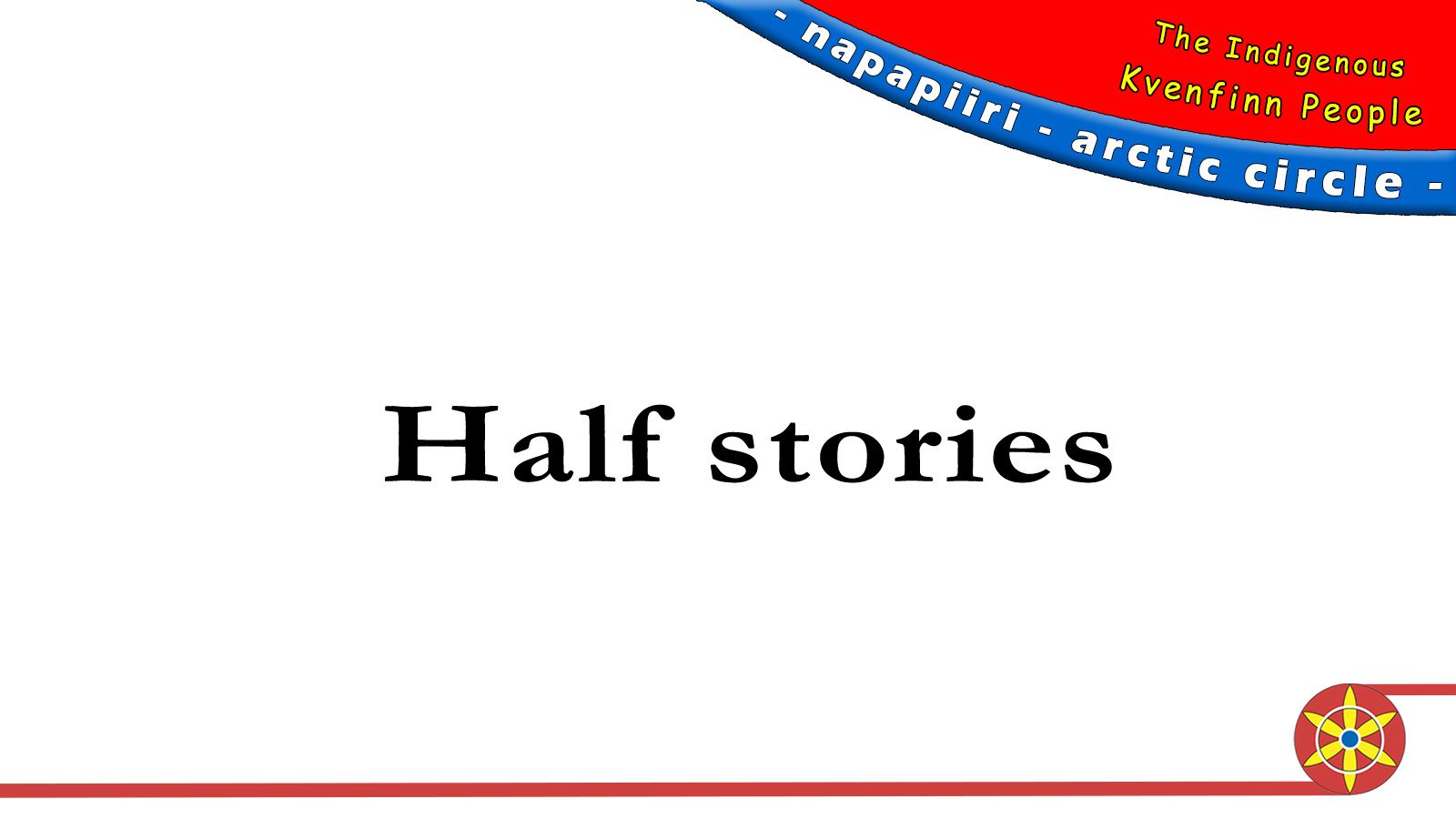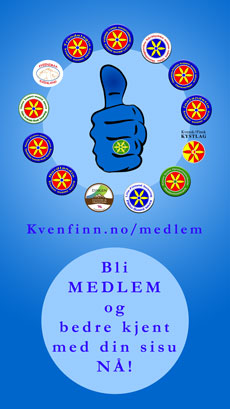A Kven/Finn Editorial
General secretary Rune Bjerkli of the Kven Finn Association registers that many people do not like that the association wants to improve the flawed history of the Kvens/Finns. People feel threatened, they realize the story is half complete.
Man differs from all other creatures in many ways. The biggest is our big brain and intelligence. It gives us cognitive abilities that compensate for weaker physics. It is the one that gives us the ability to create stories. Half stories.
We have never been as informed as we are now. We can now make decisions on intricate challenges with a large factual base.
Two half-truths today
But never have we been so polarized as now, on the smallest thing. This is a paradox. There is no doubt that social media has contributed to this trend.
As soon as you show interest in something on an electronic device, you are bombarded with similar material. We are not exposed to multiple views. We only get confirmation of our original view. The opposite will experience the same.
We get a one-track story. We base our lives on half a story.
A half-truth before and now
Before and independently of social media, the understanding of the world was created by storytelling. Civilizations started with people having a common history in an area.
To build a society, you create common norms, rules and culture that have their starting point in, for example, the Bible.
Professor Yuval Noah Harari who wrote Sapiens: A Brief History of Humankind (2011) cites this as a key role in gaining power. Many nations have created a strong unity by centring their history around a god, a ruler. In the past, there was only one social media: The account of the ruler. We were assigned half a story.
Our democratically elected leaders have this role today. The fight for history is also important for today’s leaders. Julian Assange, who established WikiLeaks and published classified information about the USA’s warfare in Iraq and Afghanistan in the 00s, says it quite clearly. Our leaders all too often tell a (false) story to get people to join a war.
- Hitler attacked Poland in 1939 because “the Poles had shot at Germans”.
- In 2003, US Secretary of State Powell justified a war against Iraq with “Iraq was in the process of acquiring nuclear weapons”.
- Putin explained the war against Ukraine in 2022 to his countrymen with “Ukrainian Nazis persecuting Russian minorities in Ukraine”.
The stories of the leaders tell what is right and wrong. It matters less whether it is correct or not. Norway is not such a unique country that it doesn’t happen here too.
A half-Kven/Finnish story
Kven Finn Association has a big spotlight on history. The Kven/Finnish story is also only half complete.
The Saami say that those we called Finns were what we now call Saami. The Norwegian authorities want the Kvens/Finns to be a group of people who came to Norway in the 18th and 19th centuries. The Norwegian Kven’s Association believes that Kvens/Finns’ original language was Kveeni.
We have several solid sources that the Finns in the north were Finnish-speaking Finns. The apostle of the Finns and Lapps, Thomas von Westen, received Finnish Bibles from Sweden to spread Christianity along the Norwegian coast in the early 18th century.
Norway’s most important study determined in 1751 the 2336 km long border between Norway and Sweden/Finland. The work was led by Major Peter Schnitler. They documented that the Sea Finns and the Kvens spoke the same language and had common customs.
Other sources show that finns were probably along the Norwegian coast even earlier. In the 890s, Ottar reports to King Alfred in England about “finnas” in the far north of Norway and like-speaking Bjarmers further east.
Then there is good reason for a story that opens up the possibility that sea finns and finnas may have been Finns and/or lapplanders (Saami).
In Meänraatio a few weeks ago, professor emeritus Lars Elenius and researcher Curt Persson admitted that the storytelling in the northern Fennoskandia has taken place in a Saami tunnel vision (11:00).
A half professor
One of those who attack our work with history is professor emeritus Einar Niemi in Alta on The Day of the Kven People (March 16th). He claims that Kven Finn Association confuses history with legends and myths.
He himself sat on the Truth and Reconciliation Commission and claims that the Kven language, which has been standardized in the last 20 years, is the language of the Kven.
Kvensk is called the secret language. It has been so secret that not even the Kvens/Finns themselves knew about the language until a short time ago. Legend or myth?
Niemi denies that Kvens/Finns have used the Finnish Bible as their written reference point since before the 18th century. Læstadius’ postils were written in Finnish. To this day, a large majority of Kvens/Norwegian Finns choose Finnish as their language in primary school.
Niemi did not want any Finnish language measures for these Kvens/Norwegian Finns in the “truth work”.
The commission was only supposed to investigate the “wrong” not the “right” doings of the government. Again, we will make history based on half a story and new anti-Finnish injustices.






